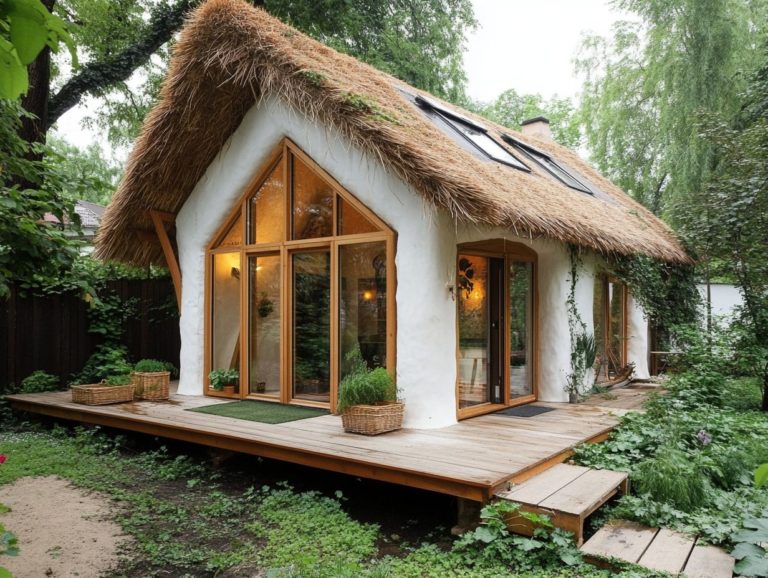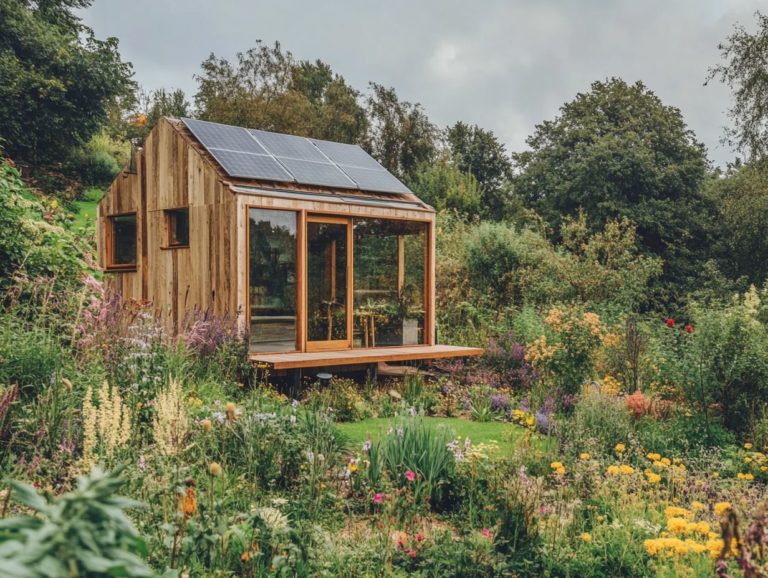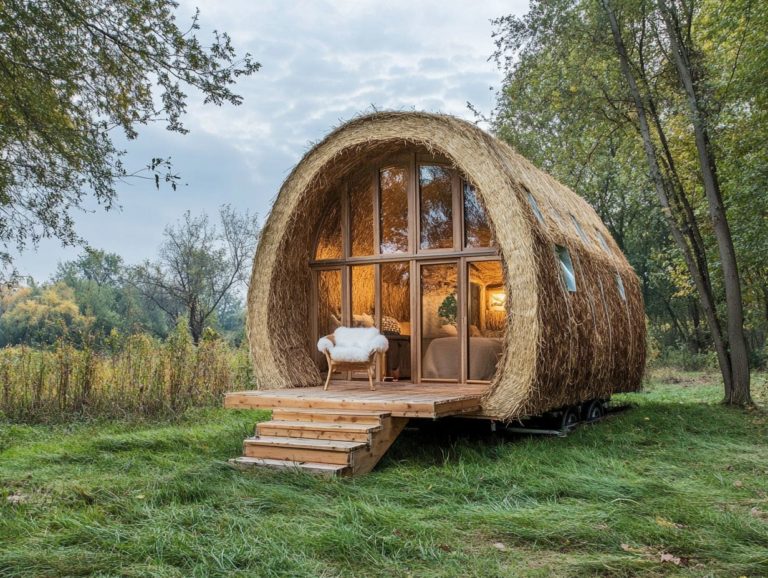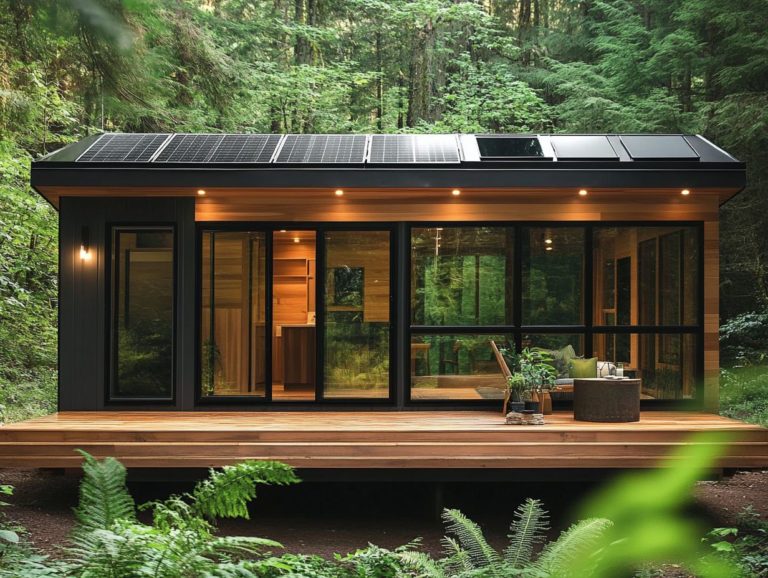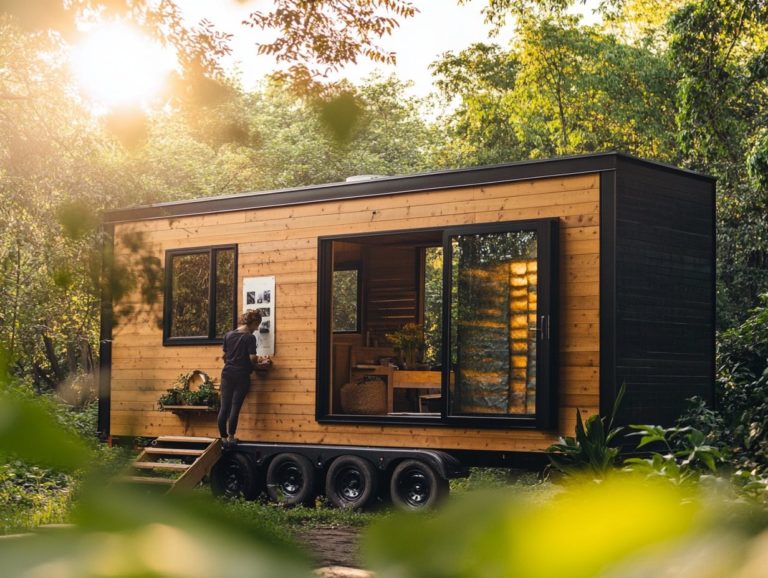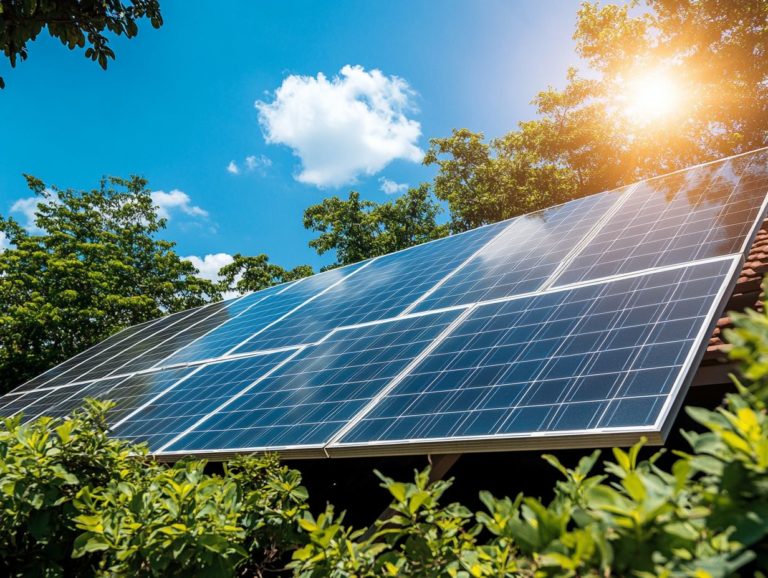Building Tiny Homes with Earth-Friendly Materials
The tiny home movement is not merely a passing trend; it’s a lifestyle choice that champions simplicity, sustainability, and efficiency. As you consider downsizing, you’ll find that tiny homes have captivated the imagination of many seeking affordable and eco-friendly living solutions.
Get ready to explore the amazing world of tiny homes! This article highlights their numerous benefits and the critical importance of using sustainable materials. You will uncover innovative building techniques, navigate the legal considerations, and receive tips on crafting a space that is both functional and aesthetically pleasing.
Embark on this journey to discover how embracing tiny living can transform not only your life but also our planet.
Contents [hide]
- Key Takeaways:
- The Tiny Home Movement
- Choosing Earth-Friendly Materials for Tiny Homes
- Building Techniques for Tiny Homes
- Permits and Regulations for Tiny Home Construction
- Tips for Designing and Decorating Tiny Homes
- Frequently Asked Questions
- What are some examples of earth-friendly materials used in building tiny homes?
- How can building tiny homes with earth-friendly materials benefit the environment?
- Are there any cost-effective options for building tiny homes with earth-friendly materials?
- Are there any building codes or regulations to consider when using eco-friendly materials in tiny homes?
- Can tiny homes built with eco-friendly materials still have modern and stylish designs?
- Are there any drawbacks to using eco-friendly materials in building tiny homes?
Key Takeaways:
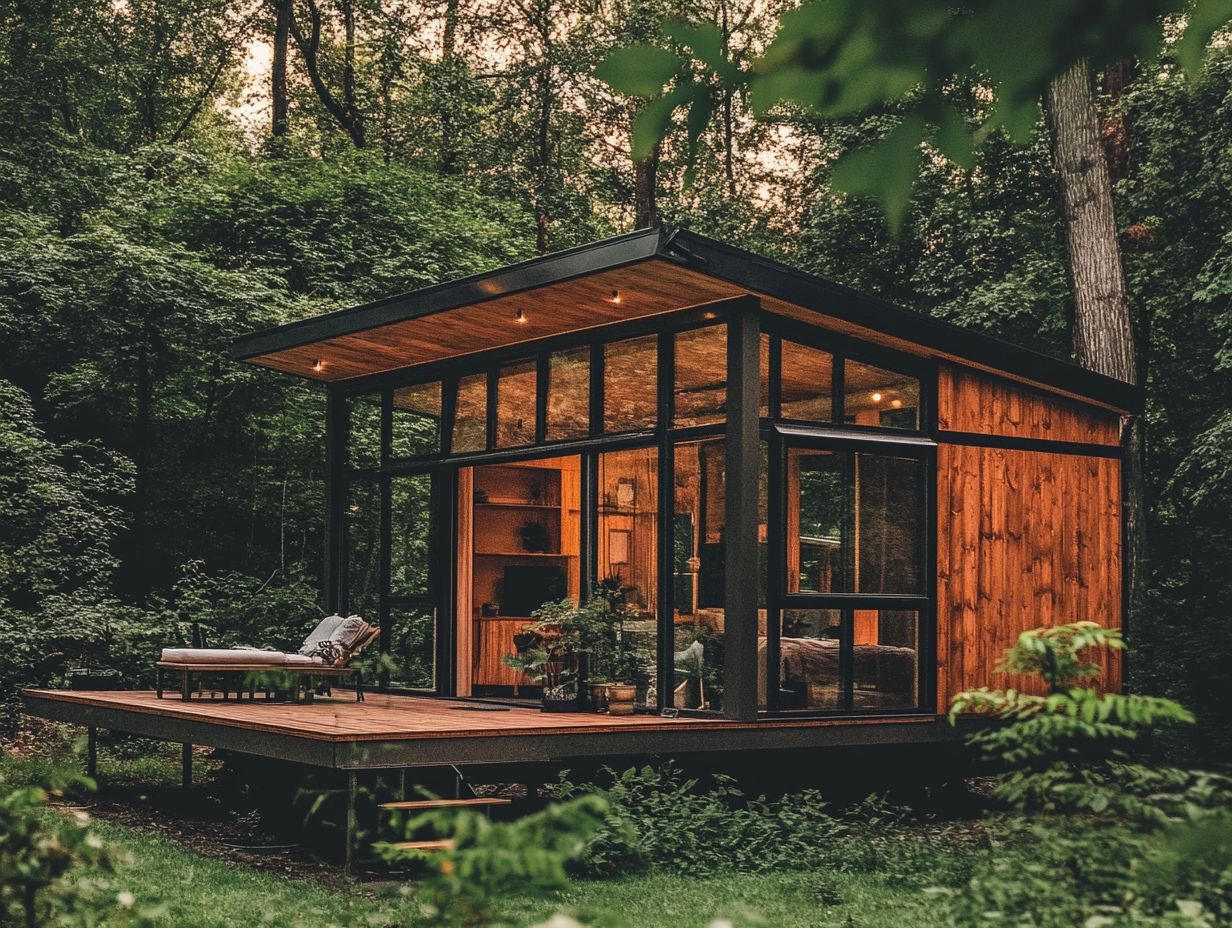
- Living in a tiny home has multiple benefits, including reducing environmental impact and living a simpler, more cost-effective lifestyle.
- When building a tiny home, choose earth-friendly materials such as sustainable and renewable options to minimize your carbon footprint and save money on construction costs.
- Maximizing space and functionality, as well as considering off-grid living options, are important factors to consider when designing and building a tiny home.
The Tiny Home Movement
The Tiny Home Movement is transforming the way you think about housing, inviting you to embrace a minimalist lifestyle within beautifully designed compact spaces. By doing so, you not only reduce your carbon footprint, which is the total amount of greenhouse gases produced by a person or activity, but also champion sustainable living.
With housing affordability becoming a pressing issue, tiny homes present practical solutions that prioritize efficiency and eco-friendliness. Consider designing a tiny house for sustainability, making them an increasingly appealing choice, whether you find yourself in bustling urban centers or serene rural landscapes.
What are Tiny Homes?
Tiny homes are your gateway to compact living spaces, usually spanning from 100 to 400 square feet. They re crafted to deliver an efficient and sustainable lifestyle while keeping your environmental impact to a minimum.
These innovative dwellings reflect a thoughtful design approach, seamlessly blending functionality with striking aesthetics. With features like multi-purpose furniture and eco-friendly materials, they not only save space but also conserve resources. For those interested in this lifestyle, designing a tiny house with minimal footprint can be a great way to start.
The tiny house movement is all about embracing the idea that less can indeed be more, promoting a simpler, clutter-free life that resonates with anyone seeking financial freedom and a reduced ecological footprint. Using reclaimed wood is a sustainable choice that perfectly aligns with these values.
Whether your style leans towards modern minimalism or rustic charm, there’s a design out there that will capture your essence. More than just eye-catching, these homes inspire a lifestyle rooted in sustainability, nurturing a connection with nature while encouraging conscious consumption. For those interested in building, exploring sustainable building materials for tiny homes can be a great place to start.
Top Benefits of Choosing a Tiny Home Lifestyle
Living in a tiny home offers you a wealth of benefits, such as enhanced sustainability, improved financial freedom from lower costs, and a streamlined lifestyle that embraces minimalism while cutting down on energy consumption.
This innovative approach promotes eco-friendly practices, like using renewable materials and efficient appliances. Not only do these choices conserve valuable resources, but they can also lead to significant monthly savings on utilities.
By downsizing, you often find relief from the financial strain of larger mortgages, allowing you to redirect funds toward experiences or savings that truly enrich your life. Embracing this minimalist lifestyle can positively impact your mental well-being, fostering a sense of freedom and reducing the overwhelming clutter that often comes with traditional homes.
Ultimately, tiny home living invites you to embrace both environmental stewardship and personal satisfaction, harmonizing your life s needs with sustainable choices.
Choosing Earth-Friendly Materials for Tiny Homes
Selecting earth-friendly materials is crucial when constructing tiny homes. Not only does it enhance sustainability, but it also plays a significant role in nurturing the overall health of your living environment.
By choosing resources such as reclaimed wood, bamboo flooring, and other eco-friendly options, you create a space that reflects a commitment to both quality and environmental responsibility.
Don’t miss out on the chance to simplify your life and make a difference for the planet! Explore tiny home options today and discover how this lifestyle can benefit you.
Sustainable and Renewable Options
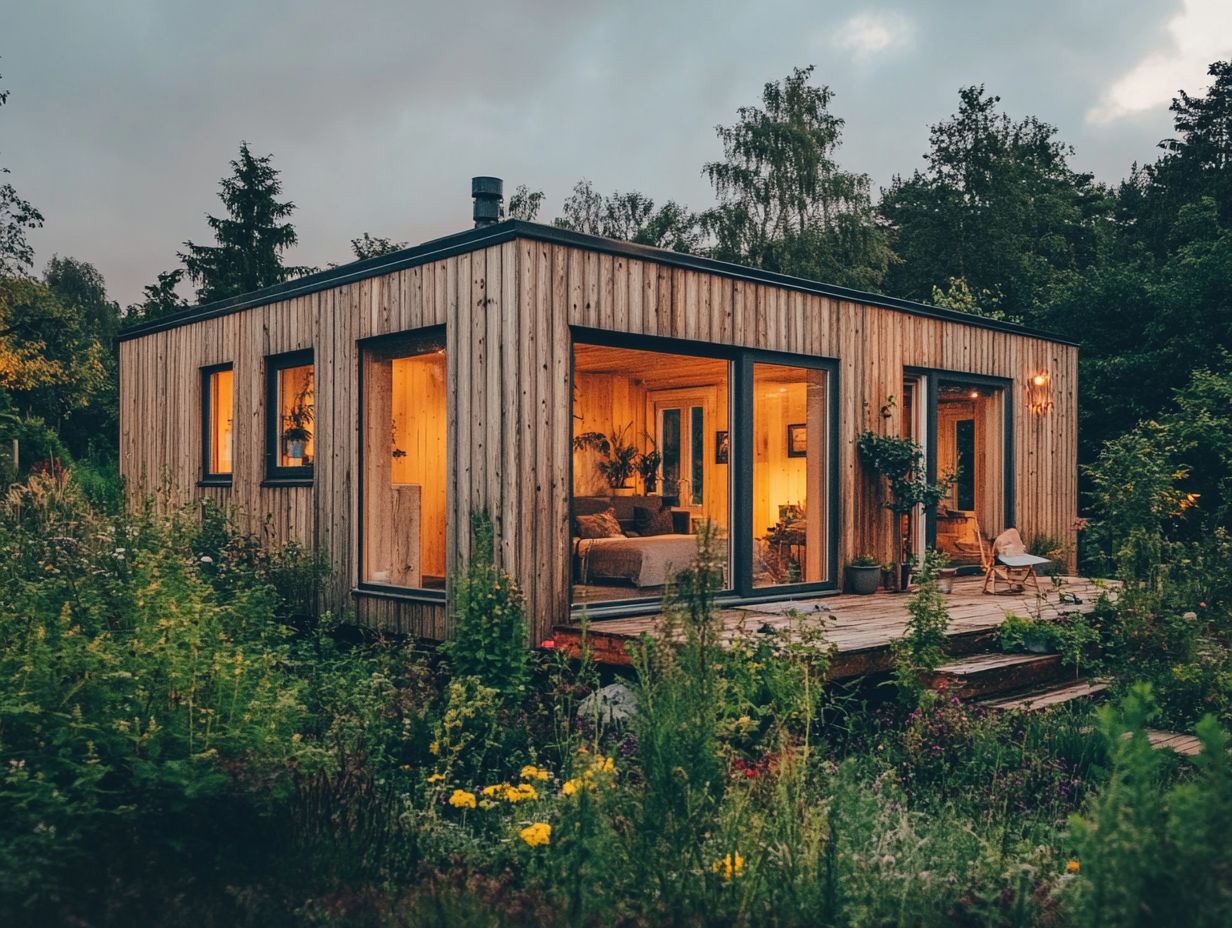
When you re building a tiny home, consider incorporating sustainable and renewable materials like bamboo, cork, and recycled elements. Doing so can greatly enhance your home s environmental impact and longevity.
These materials not only help reduce your carbon footprint but also create a healthier home. Take bamboo, for example; its rapid growth and strength make it an excellent choice for flooring. Additionally, using recycled materials in tiny house designs like cork, with its natural insulating properties, can lower your energy consumption for heating and cooling.
By using reclaimed wood or repurposed steel, you minimize landfill waste while adding unique character to your design. Using these materials also encourages efficient construction practices, ultimately leading to a significant reduction in resource consumption. For more inspiration on maximizing your space, check out creating a tiny home for everyday living.
Cost-Effective Alternatives
Cost-effective alternatives, such as recycled glass tile and durable materials, not only help you reduce the overall expense of building your tiny home but also resonate with sustainability principles by minimizing waste and tapping into alternative energy sources.
By integrating these eco-friendly options, you can save money while making a meaningful contribution to the environment. Opting for repurposed materials like reclaimed wood or salvaged metal can significantly lower your construction costs and add unique aesthetic charm. For those considering tiny homes, using the best materials for tiny house construction can further reduce the demand for new resources, resulting in a smaller carbon footprint.
This strategy encourages a circular economy, where materials stay in circulation longer, enhancing the long-term sustainability of your construction practices. Ultimately, embracing these cost-effective solutions allows you to enjoy both financial savings and a commitment to environmental stewardship.
Building Techniques for Tiny Homes
Effective building techniques for tiny homes, like prefabrication and modular construction, are essential in achieving energy efficiency and sustainable living. By incorporating innovative insulation and energy-efficient appliances, you can create a space that not only minimizes your impact on the environment but also maximizes comfort and functionality.
Maximizing Space and Functionality
Maximizing space and functionality in tiny homes hinges on clever design techniques that you can easily embrace, such as multi-functional furniture and compact layouts that make every square foot count.
By incorporating strategically placed storage solutions and thoughtfully designed spaces, you can create a harmonious living environment that reflects your style. Imagine transforming your tiny home into an oasis of style and comfort! Additionally, understanding the role of sustainability in tiny house construction can enhance your design choices. Imagine furniture that effortlessly transforms from a bed to a sofa, allowing for seamless transitions between day and night.
Vertical storage options think wall-mounted shelves or overhead cabinets can liberate your floor space while adding a touch of elegance. The optimal layout should encourage fluid movement and adapt to various activities, ensuring that even the tiniest areas feel open and inviting.
These strategies not only enhance practical use but also elevate the overall aesthetic appeal, transforming any small dwelling into a space that feels like a true home.
Considerations for Off-Grid Living
For anyone considering off-grid living, it s crucial to explore systems like greywater recycling (the process of reusing water from sinks and showers), rainwater harvesting, and passive solar design to craft a self-sufficient and eco-friendly tiny home.
Integrating renewable energy sources such as solar panels, wind turbines, and biomass systems is key to reducing your dependence on traditional utilities. Additionally, when considering your living space, learning how to choose eco-friendly flooring for tiny homes can enhance sustainability. Employing water conservation techniques like drip irrigation and composting toilets can significantly boost sustainability, ensuring that your resources are utilized wisely.
By embracing permaculture principles and utilizing local materials, you not only enhance environmental health but also build a sense of community and self-reliance. Now is the time to make the shift toward off-grid living! Implementing these sustainable design practices for tiny houses allows you to create a harmonious balance between modern living and the natural world, ultimately leading to a fulfilling off-grid lifestyle.
Permits and Regulations for Tiny Home Construction
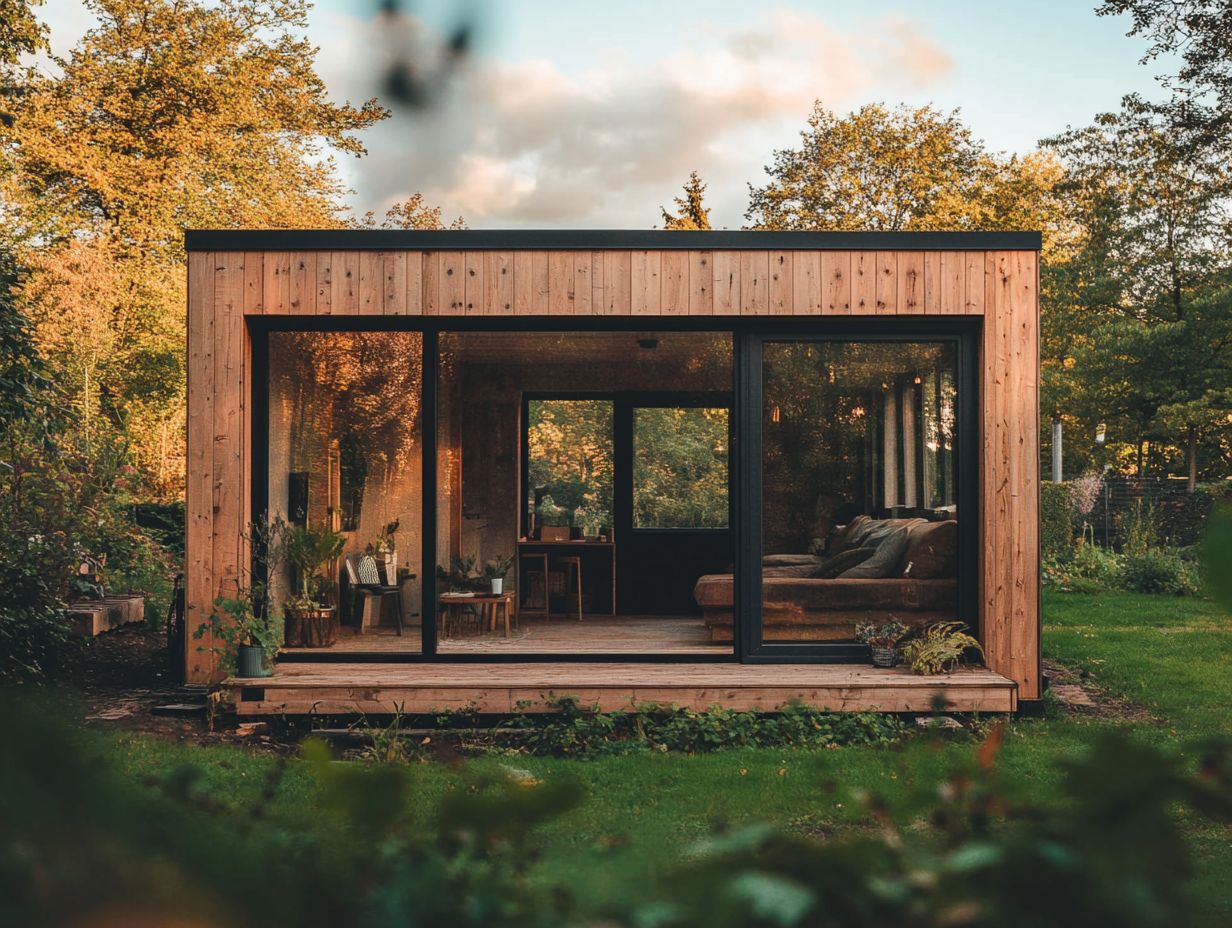
Navigating the permits and regulations for tiny home construction is essential to ensure compliance with local zoning laws. This process is key to creating a sustainable living environment that meets all legal standards.
Navigating Zoning Laws
Knowing your zoning laws is your first step to tiny home bliss! These regulations dictate where you can place your home and the requirements it must fulfill.
These laws can vary dramatically depending on your location, affecting everything from minimum lot sizes to setback requirements. In some areas, local ordinances might permit tiny homes on wheels while prohibiting those on permanent foundations, leaving you in a bit of a quandary if you’re looking to downsize.
Some regions might impose specific stipulations regarding utilities, such as sewage disposal and water access, which you must follow to stay in line with health regulations. Familiarizing yourself with these local rules allows you to deftly navigate potential obstacles and make informed decisions about your ideal living arrangements.
Obtaining Necessary Permits
Obtaining the necessary permits for tiny home construction is a crucial step that requires a solid understanding of local construction regulations.
Start by exploring local zoning laws and building codes in your area. It’s essential to gather all relevant information regarding setbacks, land use, and any specific requirements that may pertain to different types of homes.
Once you ve laid this foundational groundwork, prepare and submit your applications to the local permitting office. To enhance your chances of a successful application, providing detailed plans, securing any necessary inspections, and demonstrating compliance with environmental regulations will prove immensely beneficial.
Engaging with local building departments early can clarify the guidelines, ensuring you follow all requirements with confidence.
Tips for Designing and Decorating Tiny Homes
Designing and decorating tiny homes is an art that requires a delicate balance between functionality and aesthetics. You ll want to maximize your space while ensuring it remains visually appealing.
Pay special attention to the play of natural light, and incorporate eco-friendly insulation to enhance your home’s charm and sustainability.
Creating a Functional and Aesthetic Space
To craft a functional and aesthetically pleasing space in your tiny home, embrace multi-functional furniture and maximize natural light. This combination is essential for creating a harmonious living environment.
These elements work together not only to save space but also to cultivate a sense of openness and comfort. Imagine incorporating a Murphy bed that transforms your living area into a cozy sleeping space by day and a functional lounge by night, allowing for seamless transitions throughout your day.
Similarly, large windows or strategically placed mirrors can enhance natural light, making even the tiniest of rooms feel more expansive and inviting. A thoughtful selection of light fixtures like stylish pendant lights or sleek floor lamps adds character while effectively illuminating your space, striking a perfect balance between utility and style.
Frequently Asked Questions
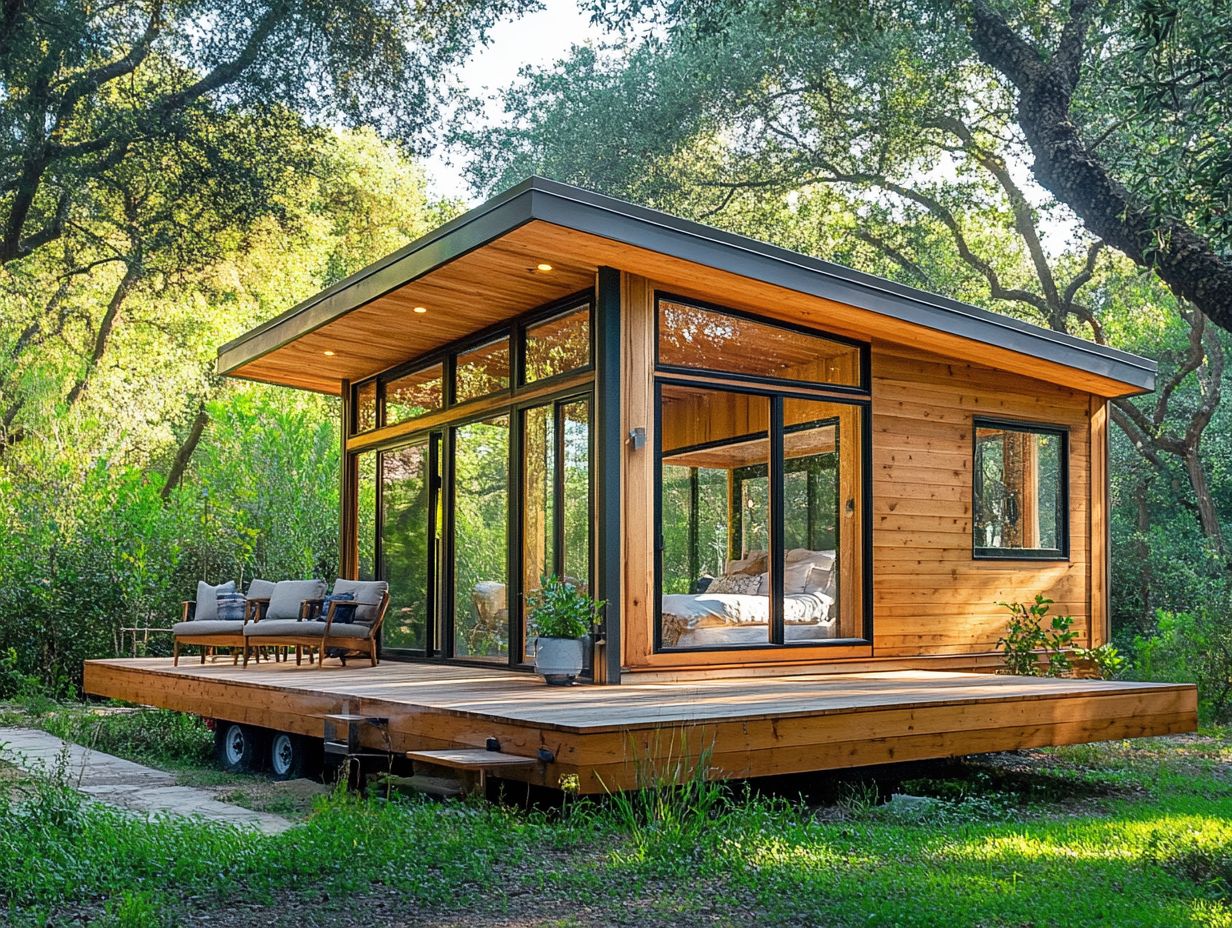
Got questions? We’ve got answers!
What are some examples of earth-friendly materials used in building tiny homes?
Some examples include reclaimed wood, bamboo, cork, recycled metal, and natural stone.
How can building tiny homes with earth-friendly materials benefit the environment?
Using sustainable materials reduces waste and energy consumption, and helps preserve natural resources.
Are there any cost-effective options for building tiny homes with earth-friendly materials?
Yes, using salvaged or repurposed materials can be cost-effective. Additionally, certain earth-friendly materials, like bamboo, are known for being affordable.
Ready to build your tiny home? Start your journey today!
Are there any building codes or regulations to consider when using eco-friendly materials in tiny homes?
Always check your local building codes. This ensures that your materials meet safety standards.
Can tiny homes built with eco-friendly materials still have modern and stylish designs?
Absolutely! You can find many modern options like sleek bamboo flooring and stylish eco-friendly countertops.
Are there any drawbacks to using eco-friendly materials in building tiny homes?
Some eco-friendly materials may need more maintenance. They might also be less durable than traditional options.
In some cases, these materials can be pricier upfront. However, their long-term benefits often outweigh the initial costs.

